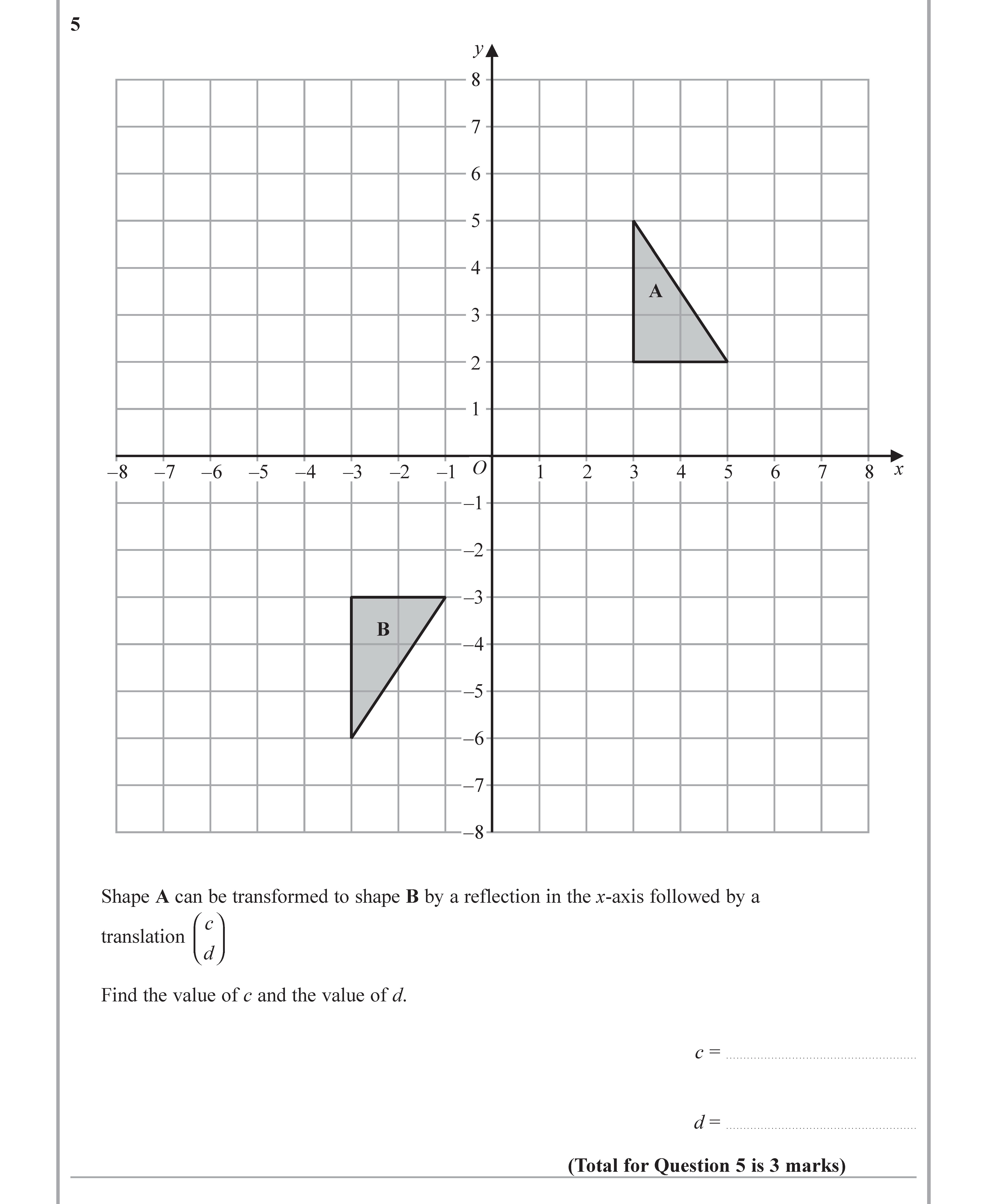Photo AI
Shape A can be transformed to shape B by a reflection in the x-axis followed by a translation Find the value of c and the value of d. - Edexcel - GCSE Maths - Question 6 - 2019 - Paper 1
Question 6

Shape A can be transformed to shape B by a reflection in the x-axis followed by a translation Find the value of c and the value of d.
Worked Solution & Example Answer:Shape A can be transformed to shape B by a reflection in the x-axis followed by a translation Find the value of c and the value of d. - Edexcel - GCSE Maths - Question 6 - 2019 - Paper 1
Step 1
Find the value of c
Answer
To find the value of c, we first reflect shape A across the x-axis. This changes the y-coordinate of each vertex of shape A. Since the vertices of shape A are at (1, 3) and (2, -1), after reflection, they become (1, -3) and (2, 1). The next step involves translating the reflected shape A to match shape B, which has vertices at (2, -6) and (3, -3).
To find the translation needed, we compare the respective vertices. From (1, -3) to (2, -6), the translation vector is (1, -3) since:
- x: 2 - 1 = 1
- y: -6 - (-3) = -3
Thus, we have:
Step 2
